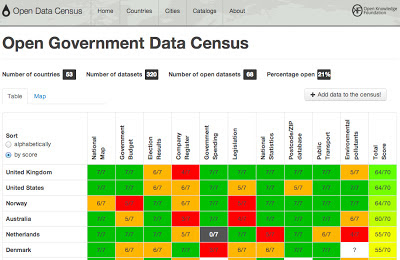Six months ago I
blogged about the success of e-tax as an egovernment service.
Over the last 14 years the service had grown to an annual 2.5 million submissions, with growth of around 5% per year.
I called it an egovernment success story for Australia - and stand by that view. E-tax has done a great job of delivering a service most adult Australians needed, a way of completing our annual tax return in a much faster and simpler manner.
However the
buzz around the Australian Tax Office's (ATO) launch of an Apple version of its e-tax software has been uniformly negative.
Besides there being issues with the
software not working under the default security settings for Apple's operating system (now fixed), the interface not complying with Apple's user interface standards (due to being a direct port from Windows), and the time it has taken for an Apple version (17 years), concerns have also been raised at the development cost (reportedly $5.2 million) and the entire approach - developing system-specific software rather than a web application.
When the ATO first launched e-tax (for Windows only) in 1997 on CD, it was considered a state-of-the-art egovernment service, showcasing the way ahead for government in moving from paper to a digital-first approach.
Over the years, as the service grew in popularity, so did the calls for the ATO to support other platforms - even create a web-based service.
The ATO continued developing e-tax,
updating it every year with the latest tax law changes, refining the interface, improving the speed and logic and ensuring it worked with the latest versions of Windows - apparently
spending over $39 million on the software to 2013, or an average of $2.8 million per year.
Of that,
approximately $32 million went to the private company that developed the software, yes e-tax was outsourced from the start.
According to Crikey, in 2004 the Tax Commissioner indicated at Senate Estimates that the ATO hadn't seen substantial demand for versions of e-tax on other platforms, however by 2007 the ATO announced in a media release that they would test an Apple version in 2008.
These tests were subsequently abandoned and nothing further happened until 2011, when the ATO again said it had an Apple version almost ready - but again delayed it until 2013 due to issues.
The Apple version of e-tax released last Friday,
reportedly cost $5.2 million to develop on top of the cost of the Windows product.
I can't verify how good this version is, as I've not yet succeeded in getting it to run on my Apple laptop.
However even if it runs perfectly, the ATO has reached a point where it needs to look beyond the current software-based approach to e-tax.
While understanding the ATO's commitment to security, in an age when the majority of Australians use the internet for their banking, companies use web-based financial, HR and CRM systems and the world's financial markets are managed through web-based trading systems, it doesn't make sense that the ATO is still developing and maintaining operating system specific software.
While I appreciate that not all Australians are online, that hasn't been a barrier to other commercial or government services offering online services, backed by face-to-face, phone or paper processes for people offline.
In fact the ATO's paper submission process works quite well - the design thinking employed by the ATO has borne a lot of fruit in this area.
From being a leader in the electronic tax return area, we've now dropped in the list significantly - with some other nations offering more sophisticated web-based solutions, or having opened the field to private companies who meet their tax office's requirements.
The ATO's centralised software-based approach is a good 20th Century solution, but an increasingly poor approach for the 21st Century as the range of devices people are using keeps increasing.
While the ATO might be able to justify cost-efficiencies in continuing to deliver e-tax as a software product, the writing is on the wall for operating system specific client software.
More and more software is moving online, with computers and other internet connection devices increasingly using web browsers essentially as their operating systems.
The risk the ATO faces is that the rising cost of maintaining and updating multiple copies of e-tax might leave the agency with less and less funds for product innovation.
In effect, if the ATO doesn't put a concerted effort into making the leap from software clients to software as a service it risks having e-tax become a white elephant, dragging down its future innovation capability.
Many organisations face this type of decision at some point. Deciding when to make a paradigm leap of this type is hard, and quickly distinguishes good from bad management.
Microsoft is moving its products online as services, as is Adobe and companies such as Salesforce.com have led the way in replacing locally hosted CRM, HR, financial and other organisational systems with online equivalents.
Government agencies will need to make similar, if not identical, decisions. When to shift the services they provide, such as e-tax, from client to cloud, when to replace the services they use with cloud from client - and which they especially need to not replace.
Whatever impact the current media storm has on the ATO, I hope both political and public sector leadership is prepared to lead in this area. To change how they approach and deliver IT to deliver long-term efficiencies and improvements.
With the focus on the ATO, I hope they are able to step up. While their track record on egovernment is good, the environment has changed and they must change with it.





